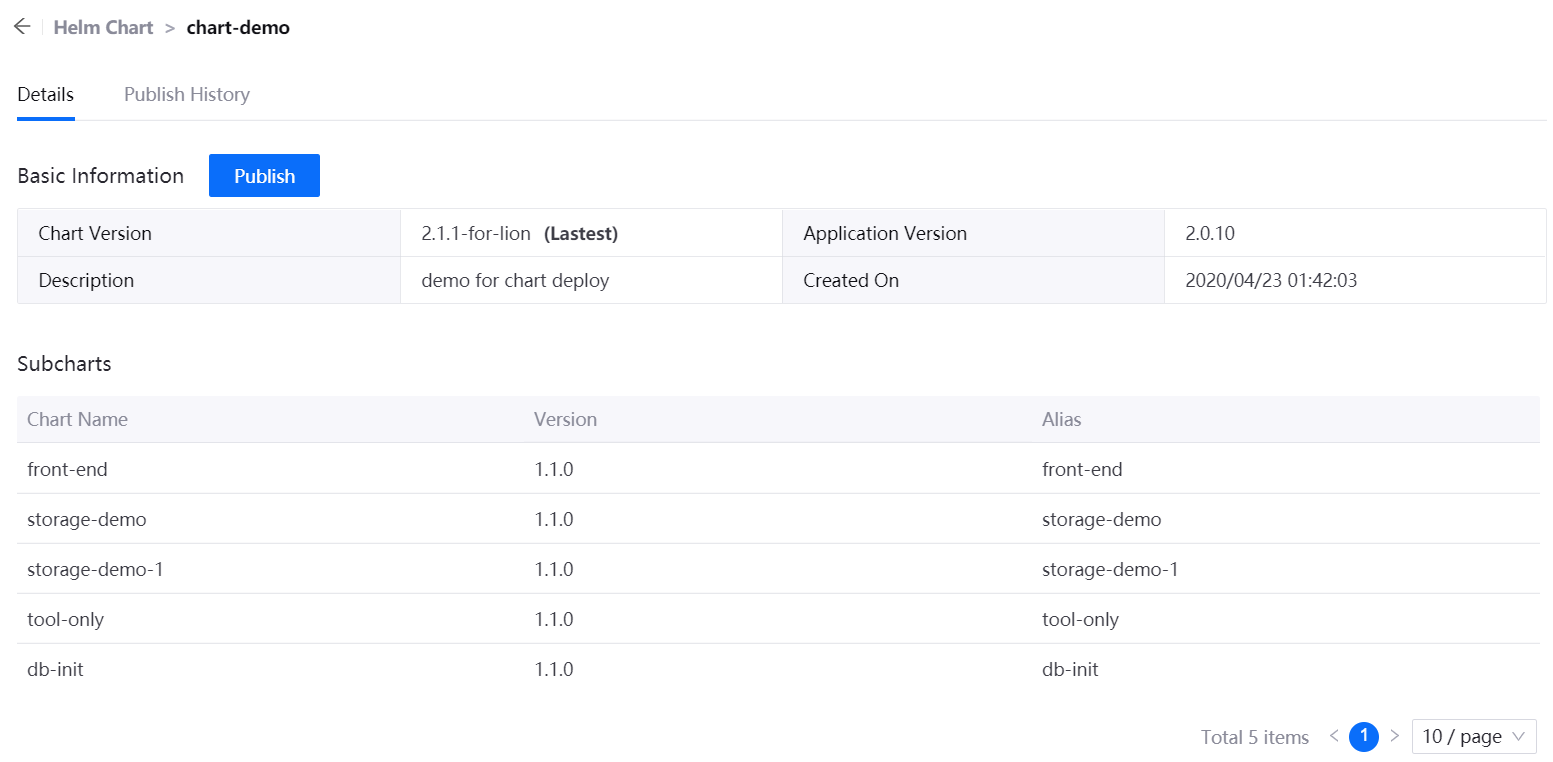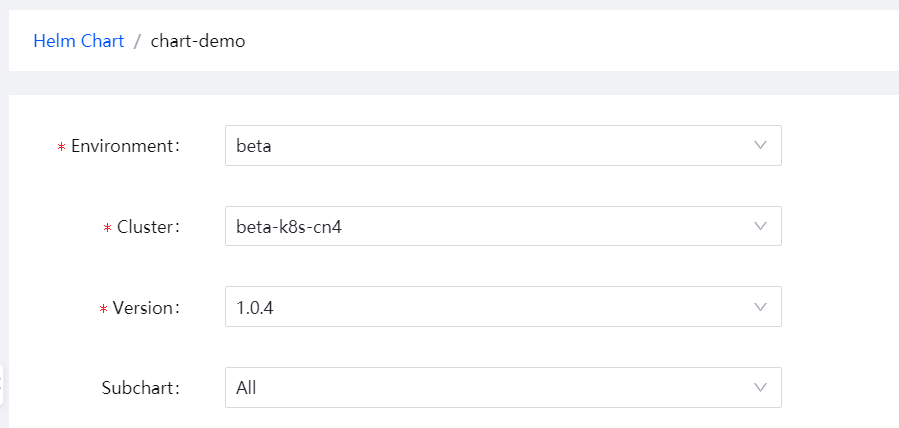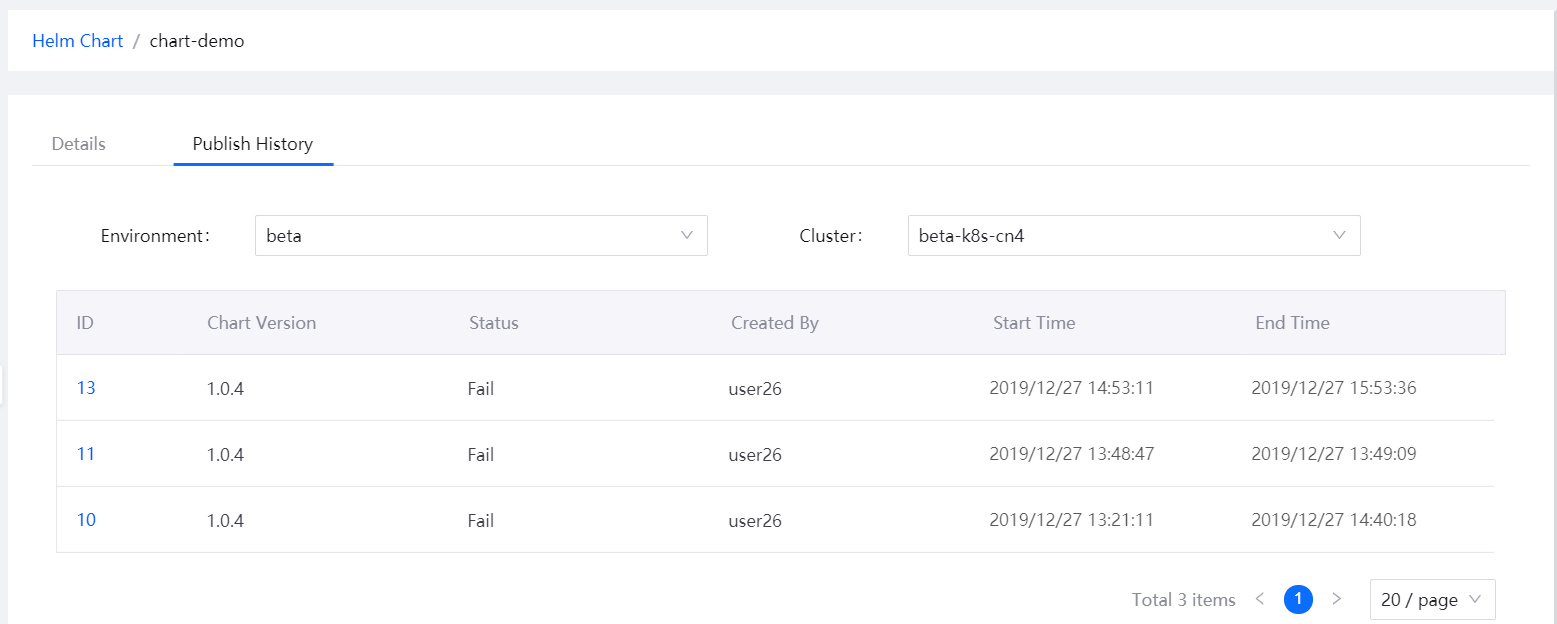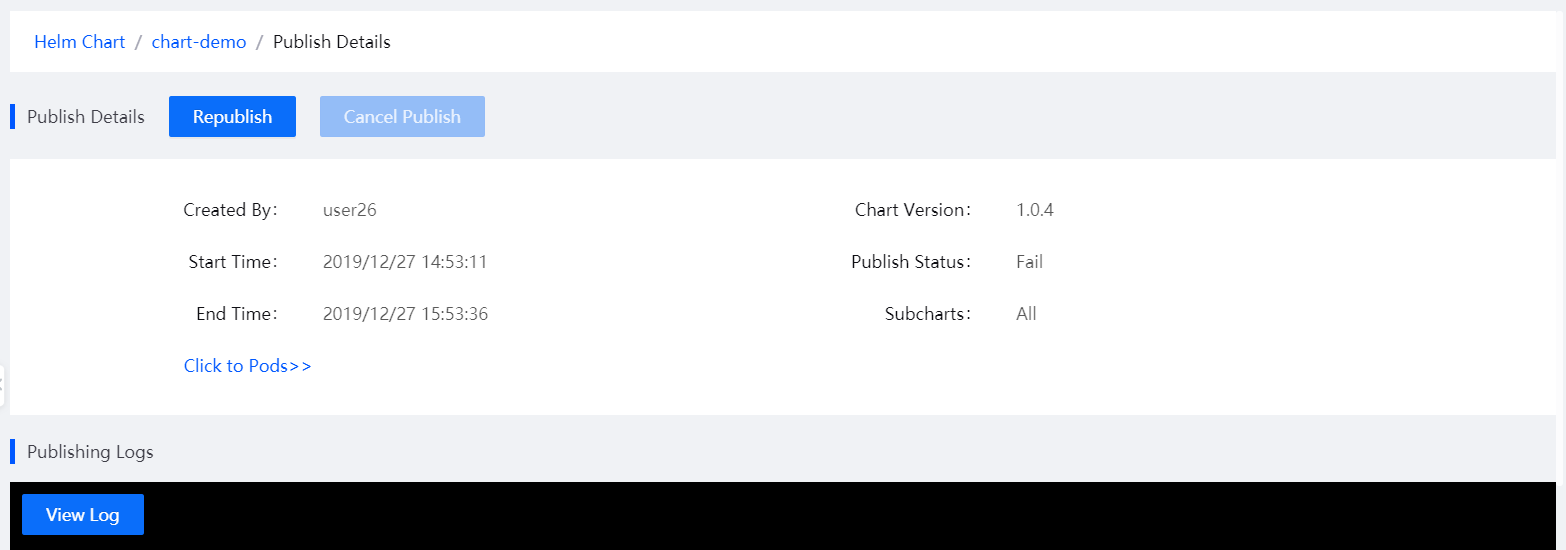Publishing an Application with Helm Chart¶
The EnOS™ ECP supports the managing and publishing of complex applications with Helm Charts, improving the efficiency of application publishing.
For more information about Helm Charts, see Helm Documentation.
Prerequisites¶
All the Chart files that are required for publishing the application are in your Git repository, organizsed by the following structure.
examples/
Chart.yaml # A YAML file containing information about the chart
LICENSE # OPTIONAL: A plain text file containing the license for the chart
README.md # OPTIONAL: A human-readable README file
requirements.yaml # OPTIONAL: A YAML file listing the dependencies for the chart
values.yaml # The default configuration values for this chart
charts/ # A directory containing the charts upon which this chart depends.
templates/ # A directory of templates that, when combined with values,
# will generate valid Kubernetes manifest files.
templates/NOTES.txt # OPTIONAL: A plain text file containing short usage notes
Uploading the Chart Files to EnOS ECP¶
Create a Chart type application. In the EnOS Management Console, navigate to Enterprise Container Platform and select Application > New Application > Chart, and provide details for the following.
Name: Enter the application name.
Git Repository: Enter the Git repository for storing the Chart files.
Description: Enter description of the Chart type application.

Create a pipeline job for uploading the Chart files. Select Development > Pipeline > New Pipeline, and provide details for the following.
Application Name: Select the Chart type application you just created.
Pipeline Name: Enter the name of the pipeline.
Triggering Mode: Select the mode for triggering the pipeline.
Add Job: In the configuration section of the UPLOAD CHART pipeline job, enter the path of the Chart files in the Git repository (i.e., path of the
Chart.yamlfile) in the Chart Path field.

Run the pipeline to upload the Chart file to ECP.
Creating a Publish Form¶
In the EnOS Management Console, navigate to Enterprise Container Platform and select Publish > Helm Chart.
In the list of Charts, find the uploaded Chart, and click the Chart name to open the Details page of the Chart.
Under the Details tab, you can view the basic information and sub-charts. The sub-charts are listed by the order of deployment.

Click Publish or Dry run and provide details for the following.
Environment: Select the environment to publish the application.
Cluster: Select the cluster for the application.
Version: Select the application version to be published.
Subchart: Select the sub-charts to be published (select all or some of the sub-charts).
Note
Dry run supports rendering templates only, without actually creating resources, and the rendering results can be viewed in the log for template debugging.

In the Global Variable section, enter or change the values for the needed variables. Click the “?” to view the original content of the
values.yamlfile.In the Custom Variable section, enter the values of the custom variables.
Click Publish to start publishing the application.
Checking the Publish Result¶
When the publish starts, the status of the publish form is changed to Running. You can check the running status and result of the publish form in the Publish Logs section.
Viewing the Publish History¶
In the list of Charts, find the target Chart, and click the Chart name to open the Details page of the Chart.
Click the Publish History tab, and select the environment and cluster where the application is deployed to query the publish history of the application.

From the list of publish forms, click an ID to open the Publish Details page, and view the details of the publish form and publish log.
(Optional) To republish the application, click Republish, edit the configuration of the publish form, and publish the application.

Next Step¶
When the publishing is completed, you can verify the published application online.